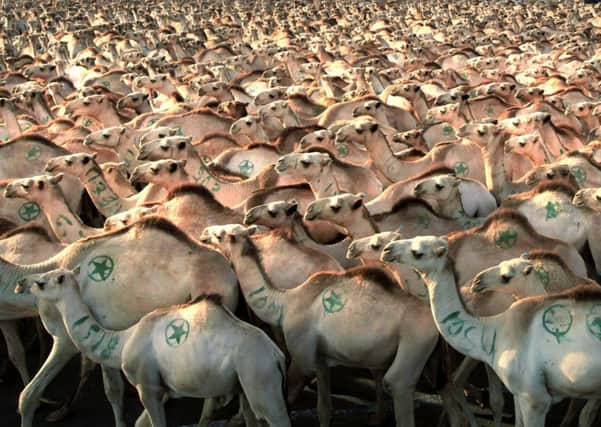Camels imports are linked to deadly Mers virus


Scientists researching how the virus is spread now suspect animals from the Horn of Africa, including Somalia, are carriers.
Tariq Madani, who heads the scientific advisory board of the Saudi health ministry command and control centre (CCC) – set up to handle the outbreak of Middle East Respiratory Syndrome (Mers) – said scientists are now testing camels at sea ports before they are allowed into the country.
Advertisement
Hide AdAdvertisement
Hide AdMers was first identified in humans in 2012 and is caused by a coronavirus from the same viral family as the one that caused a deadly outbreak of Sars in China in 2003.
More than 700 people in Saudi Arabia have contracted it and 292 have died, according to latest figures from the Saudi health ministry.
Since May countries including Algeria, Iran, Lebanon and the Netherlands have reported new cases, all from healthcare workers or travellers to the Middle East and their close contacts, including pilgrims returning from Mecca in Saudi Arabia, which is by far the biggest market for livestock from Somalia, with at least 70 per cent of Somali exports going to the kingdom.
The rest goes mostly to other Middle East states such as Yemen, United Arab Emirates, Qatar and Egypt, the latter three being particularly popular with European tourists.
“We do have suspicions that the disease may have been imported through camel trade from the Horn of Africa, but we haven’t proved it yet,” Madani said this weekend. He added that the final decision on a ban lay with the agriculture ministry.
“We have always imported camels from the African Horn ... but we will stop that until we get more information on whether they are infected or not,” he added.
Saudi Arabia has previously been criticised for its handling of the Mers outbreak, which international health experts say could have been under control by now if officials and scientists there had been more willing to collaborate on studies into how the virus operates and its origins.
Much more scientific research is needed to nail down the source of the Mers infections in humans and exactly how it makes the leap from animals, but preliminary studies suggest the virus’s animal reservoir is likely to be camels.
Advertisement
Hide AdAdvertisement
Hide AdSomalia exported about 4.7 million animals in 2013. Sheep and goats account for roughly 80 per cent, followed by camels and some cattle.
Most exports go via two Gulf of Aden ports – Bossaso and Berbera – in two breakaway regions of northern Somalia, but the animals come from all over the country, with some arriving across porous borders with southern Ethiopia and northern Kenya.
Madani said that while Saudi Arabia does have some domestic camels, most of those used for meat and trade are imported from the Horn of Africa.
Lisa Murillo, an expert in virology and affiliate scientist at the Los Alamos National Laboratory in the United States, said she had analysed data on human Mers cases in the Middle East and camel imports from the Horn of Africa, finding striking correlations that require further investigation.
As a result of her findings, Murillo says she has developed what she acknowledges is a “very speculative hypothesis” – that the number of Mers cases in Arabian Peninsula countries is related to the number of camels they import.
“That correlation just leaps off the page,” she said.
“The most important thing we need to be doing right now – outside of Saudi Arabia and the UAE – is looking for human and camel cases of Mers in the Horn of Africa – particularly in the ports of Somalia,” she said.
“If it turns out to be in camels there, why wouldn’t it be in humans there as well?”